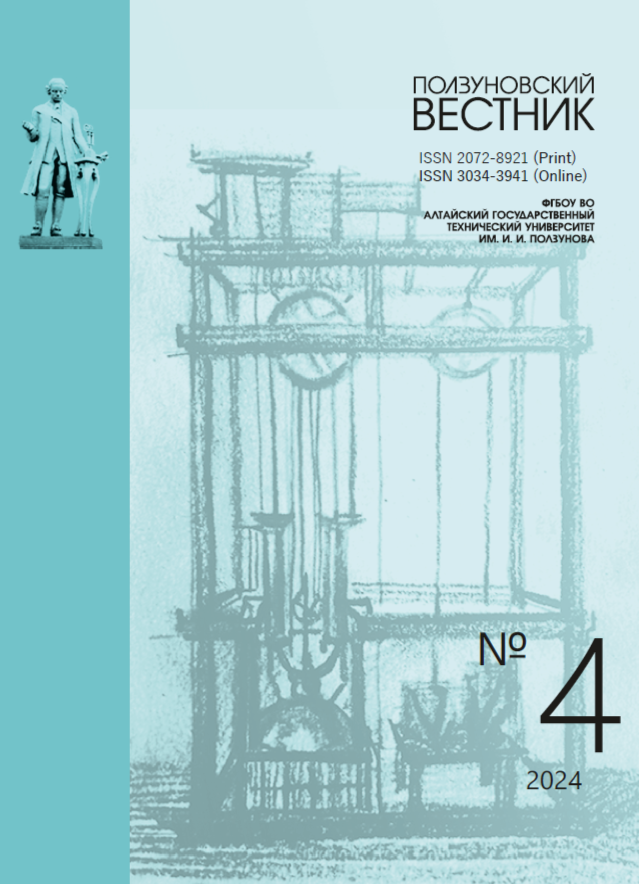Synthesis of sulfides of iron triad elements in n-alkanes
PWIETQ
DOI:
https://doi.org/10.25712/ASTU.2072-8921.2024.04.029Abstract
Metal sulfides have a wide range of applications: from refractories and solid lubricants to semiconductors and detectors in radio engineering. The paper presents a critical analysis of methods for producing metal sulfides. Synthesis from simple substances requires significant energy costs for heating mixtures to 1000 °C and long-term homogenization of the product for many hours in an inert gas environment. When conducting out self-propagating high-temperature synthesis (SHS), which has a number of significant advantages, special preparation of the starting materials and repeated grinding of the resulting sinter; the resulting products are in many cases multiphase, the surface of the particles of the metal sulfides formed is covered with a layer of oxysulfides. Synthesis in solution with pumping hydrogen sulfide gas is environmentally unsafe. Among those considered, the synthesis of metal sulfides from non-aqueous solutions was noted. The advantages are shown and its problems are outlined. The conclusions are confirmed by examples of non-aqueous synthesis of sulfides of iron triad elements. Sulfides of iron, cobalt and nickel are synthesized in the medium of liquid saturated hydrocarbons. The method used for producing sulfides is based on combining the process of hydrogen sulfide formation with the main synthesis of sulfides in one reactor. Hydroxides and acetates of the corresponding elements were used as the initial metal-containing compounds. The synthesis was carried out at the boiling point of liquid saturated hydrocarbon (n-undecane, n-dodecane) for eight hours. As a result of the synthesis, crystalline sulfides of iron (II), cobalt (II) and nickel (II) were formed. The method used in the work meets environmental safety requirements (hydrogen sulfide content in the reactor does not exceed 0.8 mg/m3) and is characterized by simple equipment design and low energy consumption. The resulting sulfides were identified methods of X-ray phase and chemical analysis.
References
Самсонов Г.В., Дроздова С.В. Сульфиды. М. : Металлургия, 1972. 304 с.
Фистуль В.И. Физика и химия твердого те-ла. М. : Металлургия, 1995. 480 с.
Рабинович В.А., Хавин З.Я. Краткий химический справочник. Л. : Химия, 1991. 432 с.
Способ получения сульфида железа (II): авт. свид. 1204571 СССР № 3605675 ; заявл. 10.06.1983; опубл. 15.01.1986, Бюл. № 2. 6 с.
Способ получения сульфида железа: авт. свид. 1439083 СССР № 4040744 ; заявл. 28.01.1986; опубл. 23.11.1988, Бюл. № 43. 4 с.
Способ получения сульфидов металлов: авт. свид. 1089050 СССР № 3474238 ; заявл. 19.07.1982; опубл. 30.04.1984, Бюл. № 16. 4 с.
Энергосберегающий синтез и характери-стика сульфидов хрома, никеля и кадмия / Д.М. Чухлеб [и др.]. // Известия Алтайского государственного университета. 2013. № 3(79), Т.1. С. 183–188.
Способ получения сульфида кобальта Co3S4: авт. свид. 1819860 СССР № 4901058 ; за-явл. 09.01.1991; опубл. 07.06.1993, Бюл. № 21. 4 с.
Способ осаждения никеля, кобальта и меди селективно от цинка из сульфатных растворов в виде сульфидов: пат. 2328573 Рос. Федерация № 2006115017/02 ; заявл. 02.05.2006; опубл. 10.07.2008, Бюл. № 19. 8 с.
Способ осаждения сульфидного концентрата никеля и кобальта из сернокислотных растворов: пат. 2281978 Рос. Федерация № 2005108398/02 ; заявл. 24.03.2005; опубл. 20.08.2006, Бюл. № 23. 5 с.
Mechanism and kinetics of the oxidation of synthetic α-NiS / N. Štrbac [et al.]. // J. Serb. Chem. Soc. 2008. V. 73(2). P. 211–219. doi: 10.2298/JSC0802211S.
Separating nickel, cobalt and chromium from iron in metallurgical products: Patent 4042474 United States Appl. № 590478 ; filed 26.06.1975; published 16.08.1977. 12 p.
Теслюк Д.А., Васёха М.В., Селькина Ю.А. Физико-химические основы синтеза сульфида кобальта(II) в обратной микроэмульсии // Вестник МГТУ. 2015. Т. 18, № 1. С. 156–163.
Способ получения сульфида металла: пат. 2112743 Рос. Федерация № 96123373/25 ; заявл. 10.12.1996; опубл. 10.06.1998, Бюл. № 16. 8 с.
МУК 4.1.2470-09. Измерение массовых концентраций дигидросульфида (сероводорода) в воздухе рабочей зоны по реакции с молибдатом аммония методом фотометрии : Методические указания. М. : Федеральный центр гигиены и эпидемиологии Роспотребнадзора, 2009. 16 с.
Ирхина (Харнутова) Е.П. Экологически безопасные методы получения сульфидов металлов в среде жидких алканов: автореф. дис. … канд. хим. наук. Барнаул, 2000. 23 с.
Перов Э.И., Ирхина (Харнутова) Е.П. Рас-творимость и состояние элементарной серы в предельных углеводородах ряда С6С10 // Журнал прикладной химии. 1999. Вып.1. С.48–51.
Руководство по неорганическому син-тезу. Том 2 / под ред. Г.М. Брауэр. М. : Мир, 1985. 338 с.
Шарло К. Методы аналитической химии, количественный анализ. Анализ неорганических соединений. Т.1. М. : Химия, 1974. 480 с.
Downloads
Published
How to Cite
Issue
Section
License
Copyright (c) 2024 Elena P. Kharnutova, Lina V. Zatonskaya, Vladimir P. Smagin

This work is licensed under a Creative Commons Attribution 4.0 International License.















 .
. This work is licensed under a
This work is licensed under a 
